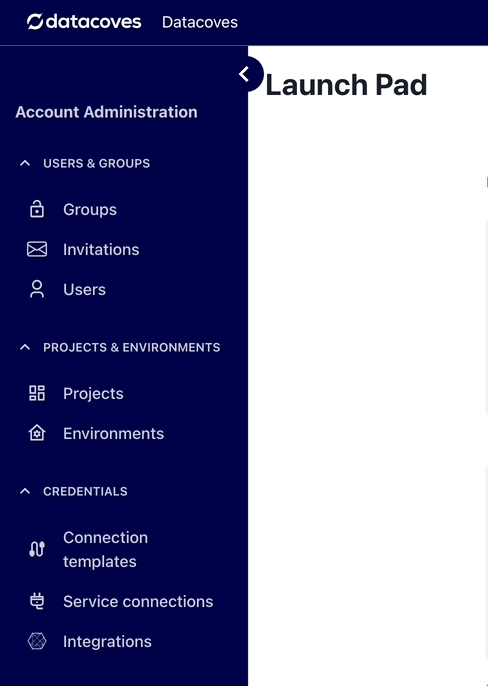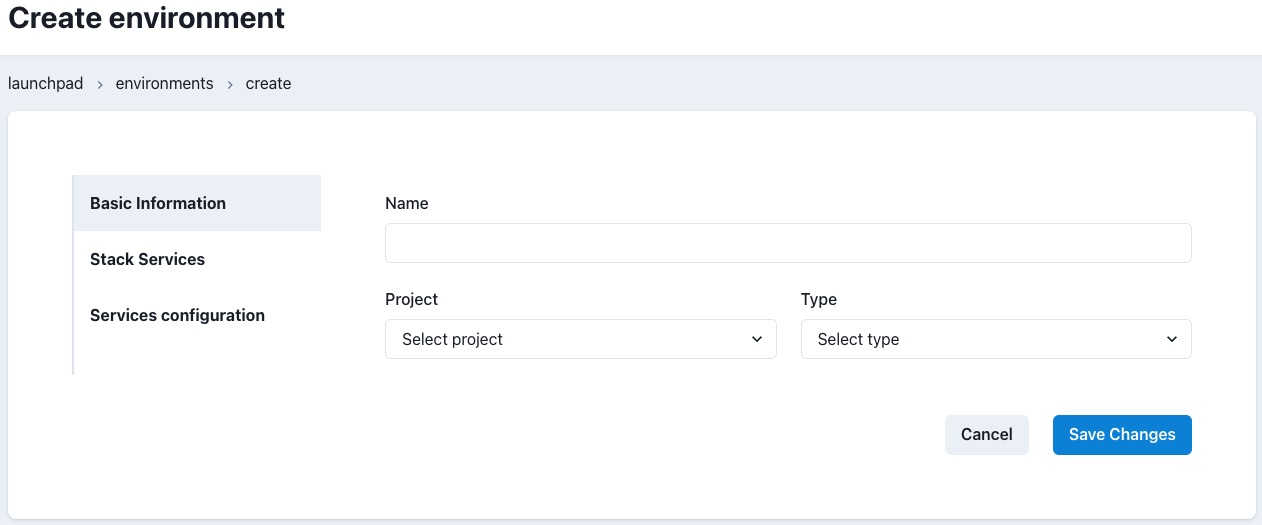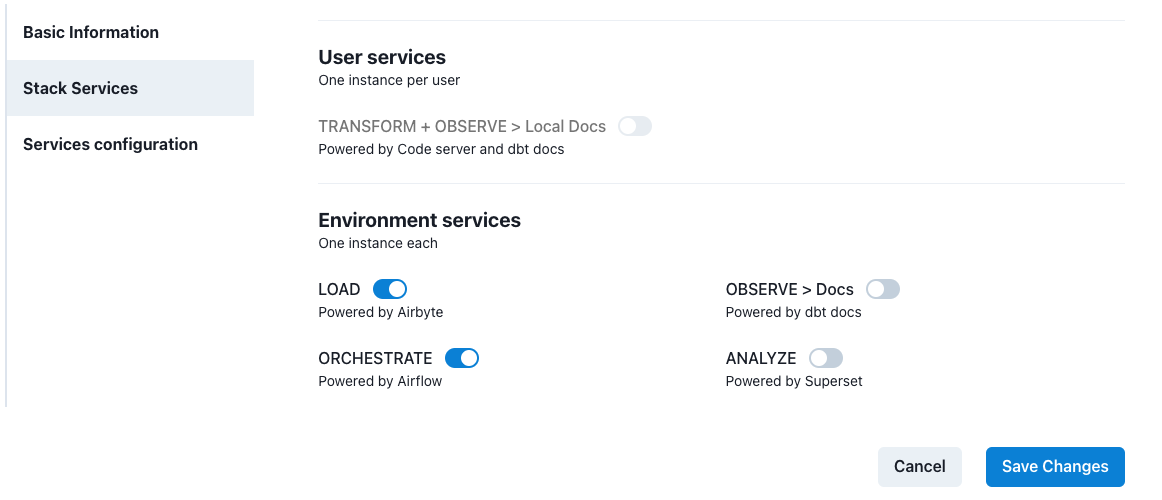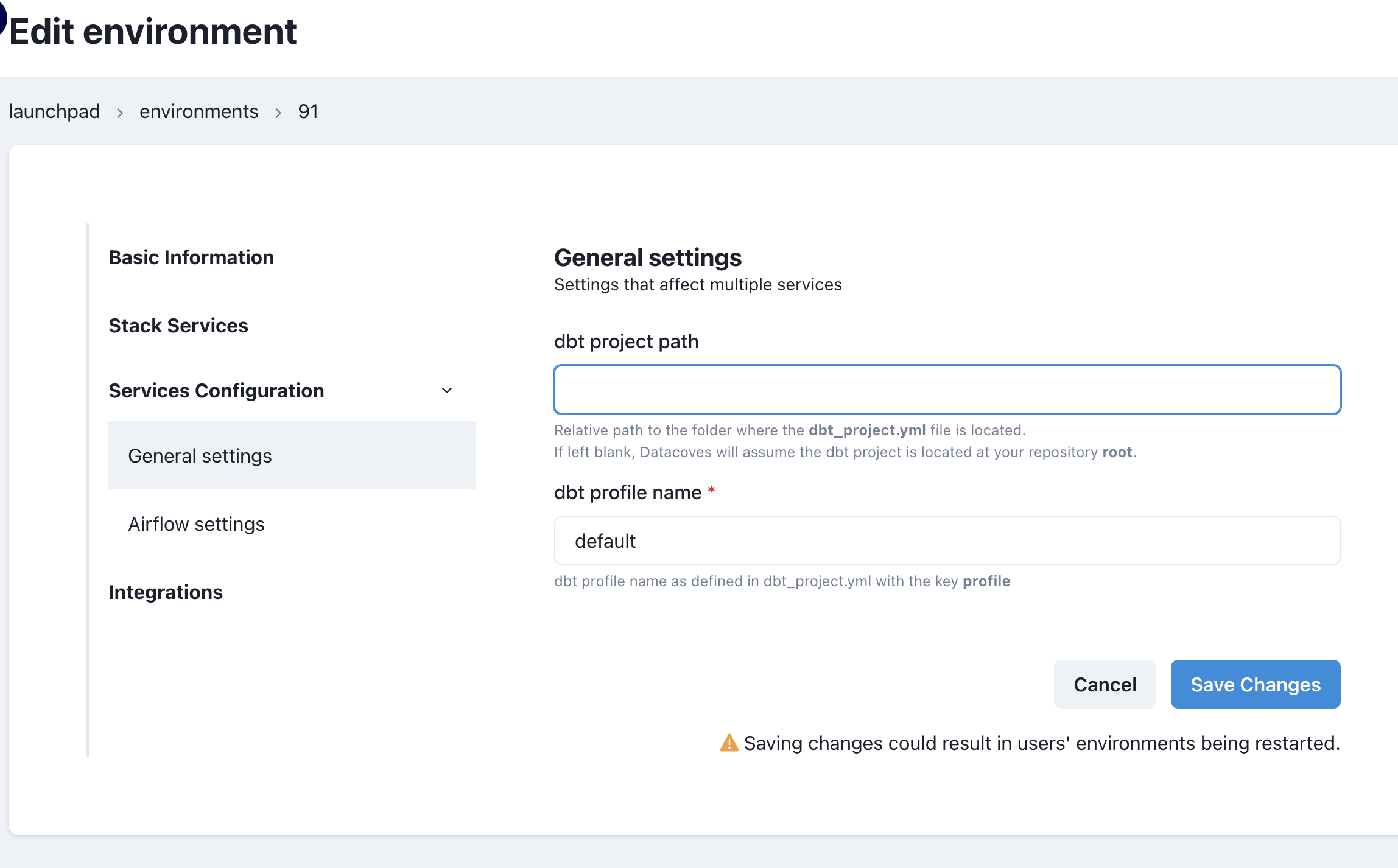How to Create/Edit an Environment
Navigate to the Environments page

To create a new environment click the
New Environment
button.
Environment Settings are separated into different tabs.

Basic information
This tab has the base information for the environment.
-
The
nameto be displayed on the launchpad -
The
Projectthe environment should be associated with -
The
typeof environment (development, test or prod). It is best practice for users to perform their work in a development environment and production jobs to run in a production environment which is typically more governed.
Stack Services
Define which tools will be enabled for this environment. At least one service must be enabled.
Available services include:
-
LOAD (Airbyte) -
TRANSFORM (dbt and VS Code) -
OBSERVE (dbt docs) -
ORCHESTRATE (Airflow) -
ANALYZE (Superset)

Services Configuration
The services enabled for the environment may require additional configurations. This tab is where the services will be configured.
-
TRANSFORM (dbt & VS Code) requires:
-
dbt project path:
The path the location of the
dbt_project.ymlthis allows you to either have the dbt project at the root of your git repository or in some sub-folder. If you have implemented the recommended folder structure this will betransform. If your dnt project is at the root, leave it blank. -
dbt profile name:
dbt profile name as defined in dbt_project.yml with the key profile. The standard is
default.
-
dbt project path:
The path the location of the

-
ORCHESTRATE (Airflow) requires:
-
branch:
Determines git branch to synchronize to Airflow. This allows you to have one branch for a development environment and
mainfor a production environment. In other words, in development we recommend making this fieldairflow_developmentandmainin production. Please be aware that you will need to create anairflow_developmentbranch in your repository. -
dbt profiles path:
The location where Airflow will find dbt profiles.yml file to use during a dbt run. This should be
automate/dbt. Please be aware that you will need to create theautomateanddbtfolders as well as theprofiles.ymlin your repository. -
YAML DAGs path:
When using yml based Airflow DAGs Airflow will look for the yml files in this location. We recommend this be set to
orchestrate/dags. Please be aware that you will need to create theorchestrateanddagsfolders in your repository. -
Python DAGs path:
This is the location Airflow will look for the DAG definition files. We recommend this be set to
orchestrate/dag_yml_definitions. Please be aware that you will need to create theorchestrateanddag_yml_definitionsfolders in your repository.
-
branch:
Determines git branch to synchronize to Airflow. This allows you to have one branch for a development environment and
-
OBSERVE (Docs) requires:
- branch: Here we specify the branch that will be synchronized for production dbt docs. This branch must exist in your git repository.
